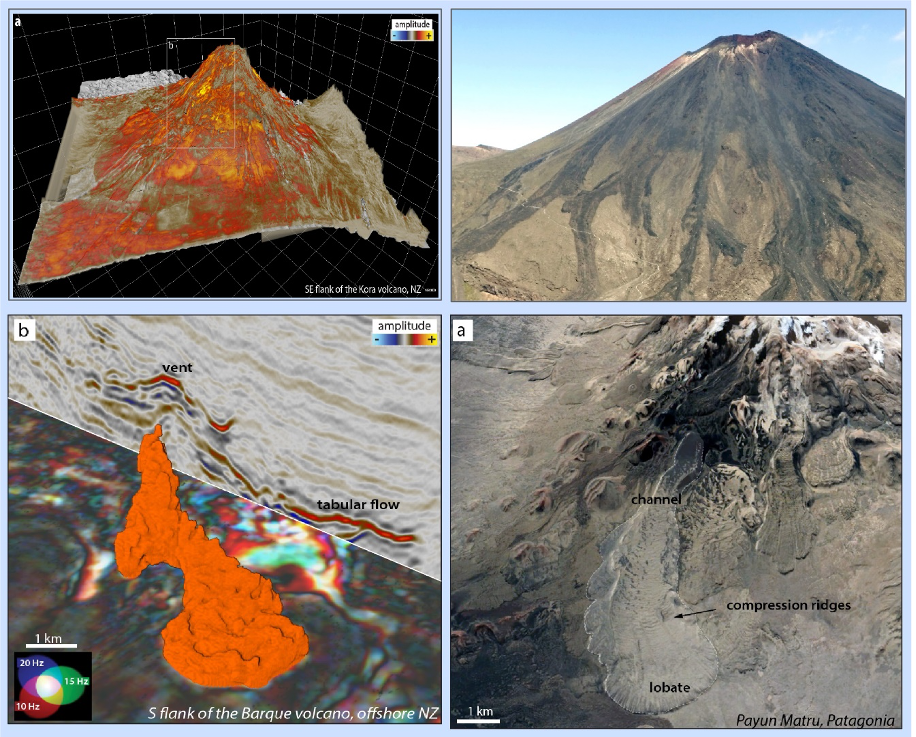Volcanic morphologies provide information about the primary and secondary processes that formed them, and can be used as analogues for understanding buried igneous systems and their impact on geoenergy exploration. Our ability to investigate the formation and evolution of volcanoes now buried in sedimentary basins has developed immensely over the past decades, in parallel with improvements in the quality and quantity of seismic reflection data. Today, new seismic data and methods of seismic interpretation offer a unique opportunity to observe the entire architecture and stratigraphy of individual volcanic systems, with resolution down to tens of meters. This talk will summarize the methods used to extract the geomorphic aspects and spatio-temporal organization of buried volcanic systems,with emphasis on the utility of 3D seismic reflection volumes. Based on observations from key localities worldwide, but particularly from New Zealand, I will present the main geomorphic categories of buried volcanoes in comparison with: clusters of small-volume (<1 km 3 ) craters and cones, large (> 5 km 3 ) composite, shield and caldera volcanoes, and voluminous lava fields (> 10,000 km 3 ). The close correlation between the morphology of buried and modern volcanoes provides the basis for constructing realistic models for the facies distribution and architecture of buried igneous systems, which can aid valuable information for exploring petroleum and geothermal targets and identifying CO2 storage sites.

